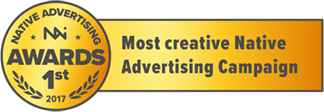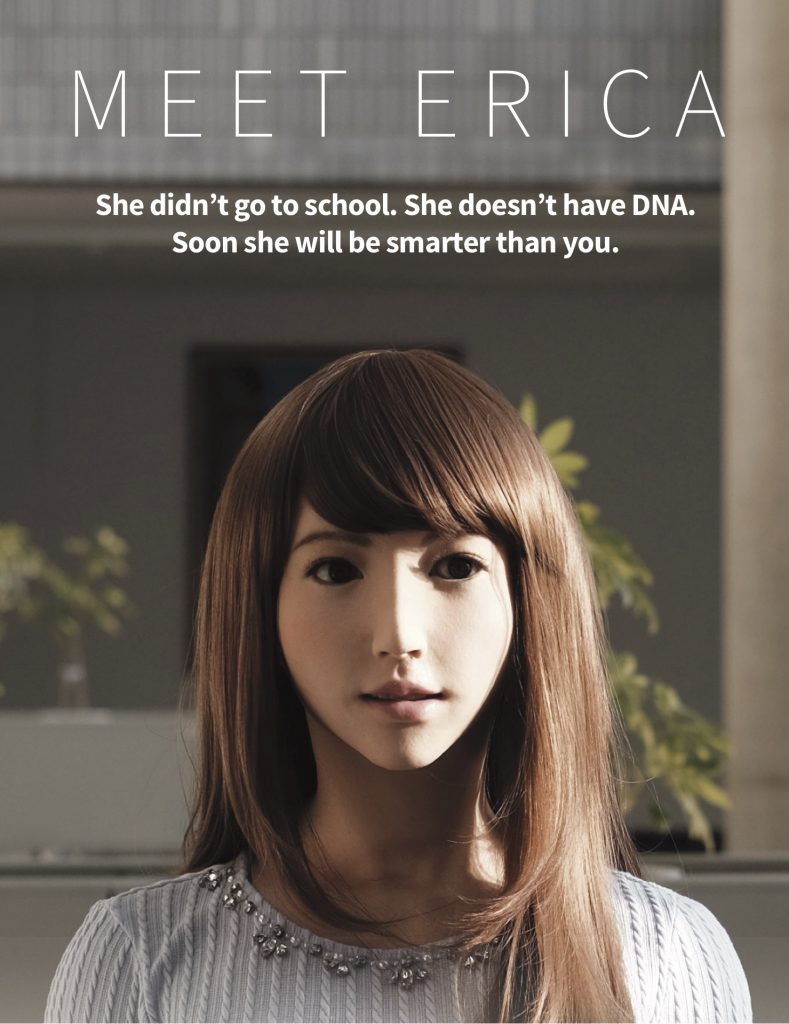
 Details
Details
Summary
To grow awareness of UBS’s “Nobel Perspectives” content and engage High-Net-Worth Individuals, T Brand Studio created a native advertising piece in which they implemented the chatbot Rose, a five-chapter article, and a short documentary-style video. The campaign reached 12,292 social engagements and 133,696 social referrals.

Creator: T Brand Studio, The New York Times, Spark Foundry
Campaign: What it Takes to be Human
Brand: UBS
Market(s): USA
T Brand Studio needed to connect the complex world of economics, explored in Nobel Perspectives, with UBS’s current and prospective customers.
Mission
UBS provides financial advice and solutions to wealthy, institutional and corporate clients worldwide, as well as private clients in Switzerland.
The mission was to grow awareness of UBS’s “Nobel Perspectives” content, engage notoriously elusive High Net Worth Individuals (HNWIs) and contemporize Nobel laureate economic theories from the past by repositioning them topically in today’s world
In 2008, the global economy faced its most dangerous crisis since the Great Depression. UBS needed to restructure in a bid to stand apart from its competition.
RELATED: How School Applications Reached a Record High With Native on Facebook
To differentiate, UBS partnered with broadcaster Frank Elstner to use the video rights to an archive of video content with past Nobel Laureates in economic science and created Nobel Perspectives. Inspired by this content, the first challenge was to engage this notoriously elusive and time-poor audience.
Secondly, T Brand Studio needed to connect the complex world of economics, explored in Nobel Perspectives, with UBS’s current and prospective customers. And thirdly, they needed to convince a Swiss bank that in order to truly stand out, it needed to be radical in its approach to releasing content.
Perception and high levels of engagement were the key goals. And, to guarantee target audience engagement with the content, it was essential to position it in a high-dwell-time and an audience-familiar environment.

KPIs
The KPIs for the case were broadly divided into two areas: business and campaign.
For business metrics, T Brand Studio measured brand awareness percentage lift and brand consideration percentage lift.
RELATED: You Need to Create Original Content That is Meaningful to the Reader
For campaign metrics, they measured: page views, social referrals, average dwell time, average video completion, scroll rate, scroll depth, social engagements, impressions and the volume of traffic to UBS.com
Target audience
The main objective was to engage notoriously elusive High Net Worth Individuals (HNWIs) globally. Global HNWIs, of which over 22 percent – or about three and a quarter million people – read The New York Times (source: Capgemini).
If engagement and awareness of this elusive HNWI audience were key, T Brand Studio knew they had to really capture the attention of the audience in an environment they trust and were already spending time in.
Strategic approach
If engagement and awareness of this elusive HNWI audience were key, T Brand Studio knew they had to really capture the attention of the audience in an environment they trust and were already spending time in.
They also needed to leverage the influence of this environment to find these readers. Branded content was the best way to achieve a prolonged engagement with this time-poor audience.
With the 60th anniversary of Nobel laureate Herbert A. Simon’s study on “The Logic of Machine Theory” approaching, T Brand Studio decided this was their opportunity to frame the theory contextually to an HNWI audience through a contemporary lens.
With exposure to over 22 percent of the Global HNWI population, equating to about three and a quarter million of the client’s target audience (source: Capgemini), The New York Times and T Brand Studio made the perfect collaborator for UBS and Spark Foundry agency.
Rose speaks to the audience about whatever they want (within reason), but gently encourages the exploration of AI further by delving deeper into the content.
Creative idea
Innovation and technology were at the forefront of the piece. Provocatively titled “AI: What It Takes to Be Human”, the project delves into storytelling but also offers the reader the opportunity to experience the story.
T Brand Studio implemented the award-winning chatbot Rose. Rose speaks to the audience about whatever they want (within reason), but gently encourages the exploration of AI further by delving deeper into the content.
RELATED: Advertising in VR & AR: The Future is Native
The chatbot is followed by an original, five-chapter New York Timesian article, and a short documentary-style video looking into the world of Professor Hiroshi Ishiguro, a leading humanoid designer from Osaka, Japan.
This content media combination is complemented by an interactive timeline featuring key dates of the development of AI through the years, including Herbert A. Simon. Additionally, access to three key industry experts and influencers in the field of artificial intelligence was maximized through an expandable Q&A published with each of them, lending greater authority.

The content is wrapped up with UBS-owned Nobel Perspectives content in a dynamic rotating footer directing traffic to the Herbert A. Simon Nobel Perspectives page on UBS.com.
Platforms
The content has its own URL and lives on the nytimes.com domain.
Native display units on The New York Times webpage and on T Brand Studio’s social media channels were driving traffic to the campaign.
The native units were targeting using first- and third-party data to reach a Global HNWI audience.
Content distribution and promotion efforts
Native display units were used to promote the content, built specifically in line with the style of the content and designed to fit within the NYT environment. This included a rotation of headlines and creative, which were optimized regularly to ensure contextual relevance and maintain audience interest.
The native units were targeting using first- and third-party data to reach a Global HNWI audience.
T Brand Studio also created a bespoke one-page print ad, published in The New York Times print edition, to raise awareness and drive traffic to the piece.

Size of team involved
Production: a team of editors, designers, producers, web developers and a film crew.
Agency and client-side: account managers, directors, and head of brand.
Under 20 in total.
There were 12,292 social engagements and 133,696 social referrals, proving that the discerning audience were so compelled by the experience that they wished to share it with their own followers.
Results
- The campaign surpassed the target reach (100,000 visits), achieving 217,593 visits for the three-month live period, exceeding all expectations.
- Dwell time reached 1.24 mins (NYT benchmark 1.21mins) and the average video completion rate was 52% (surpassing NYT average of 38%), demonstrating that the content captured the audience’s attention.
- There were 12,292 social engagements and 133,696 social referrals, proving that the discerning audience were so compelled by the experience that they wished to share it with their own followers.
- As well as interaction with the chatbot, the long-form article and video saw an average scroll rate (how far down the page people got) of 68.4%.
- Plus, 2,647 people visited UBS.com, demonstrating their engagement and a clear link between the branded content and UBS.
- The content visits through the NYT environment, which surpassed the original goal, combined with the virility of the social actions from the page and the consequent referrals, demonstrates that the objectives for awareness were achieved.
- Additionally, high video completion rate that exceeds the NYT benchmarks, the dwell time and deep scroll rate of the content (along with social) also show this time-poor audience’s positive engagement with the content.
Business metrics:
- Brand awareness % lift: 50% Brand Recall versus 33% Standard Ad and 12% control group over three months
- Brand Consideration % lift: 79% versus 72% standard ad 70% control group over 3 months.
Campaign metrics:
- Page views: 217,593 (versus 100,000 target), 3 months
- Social referrals: 133,696, 3 months
- Average dwell time: 1.24 mins., 3 months
- Average video completion: 52%
- Scroll rate: 68.4%
- 12,292 social engagements
- 4,078,875 impressions on NYT site
- 2,647 visits UBS.com
- 1 full-page ad in NYT
This case study is part of a collection of award-winning native advertising examples studies from Native Advertising Awards presented by The Native Advertising Institute.
We aim to acknowledge and reward great native advertising and promote inspiring, effective and creative work that helps organizations worldwide achieve their goals and tell great brand stories in a non-disruptive way.
DOWNLOAD: Native Advertising Trends 2017 - The News Media



